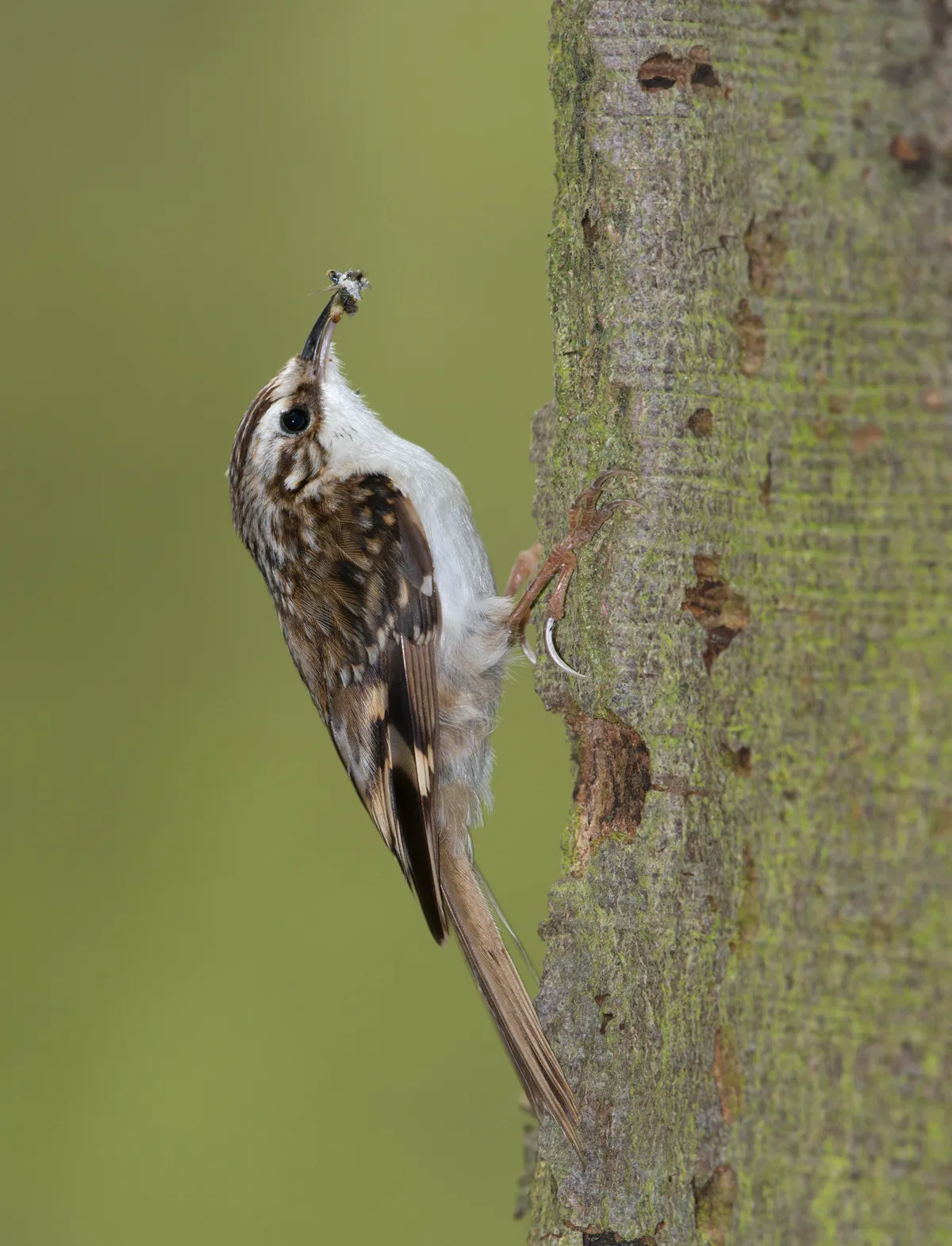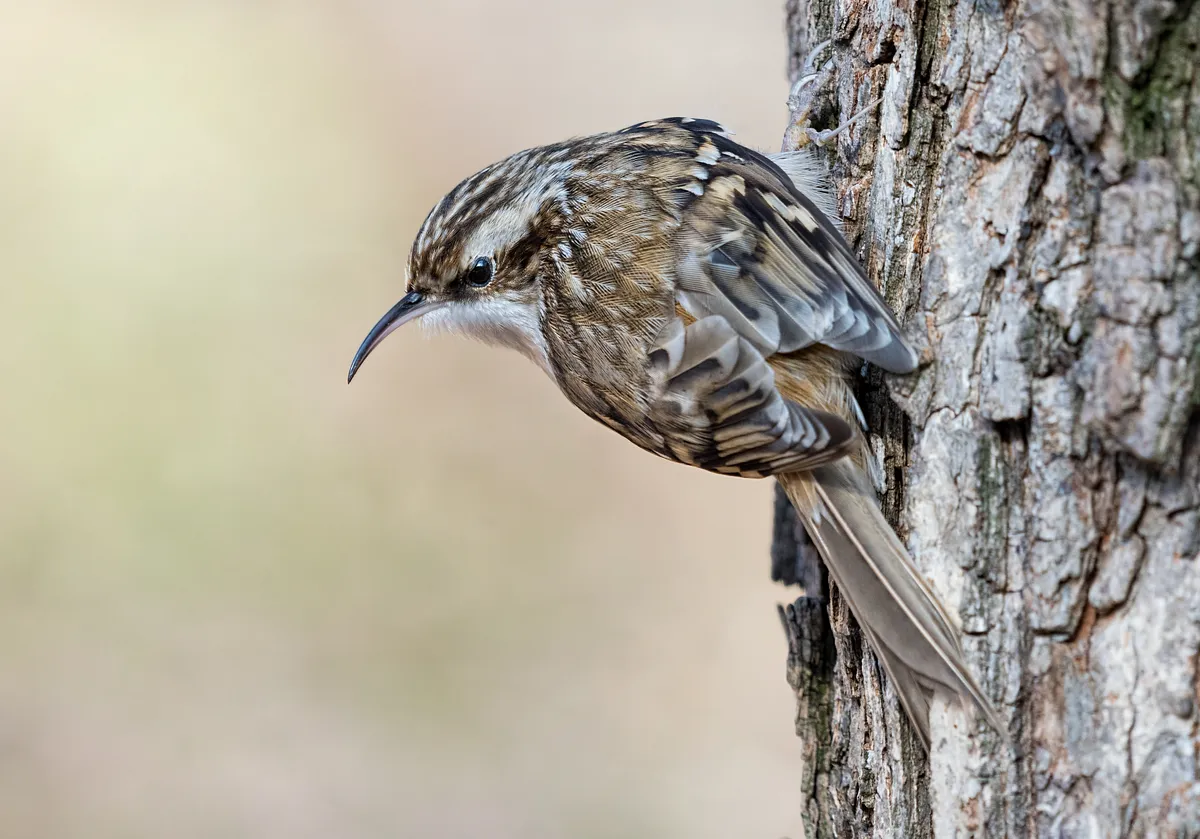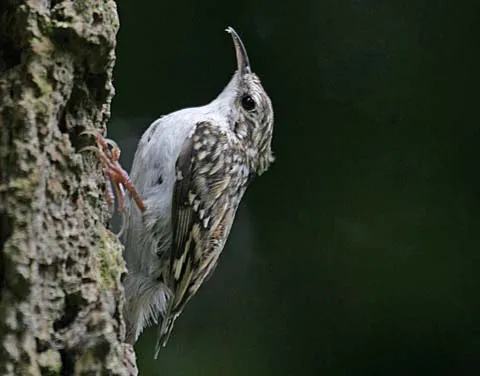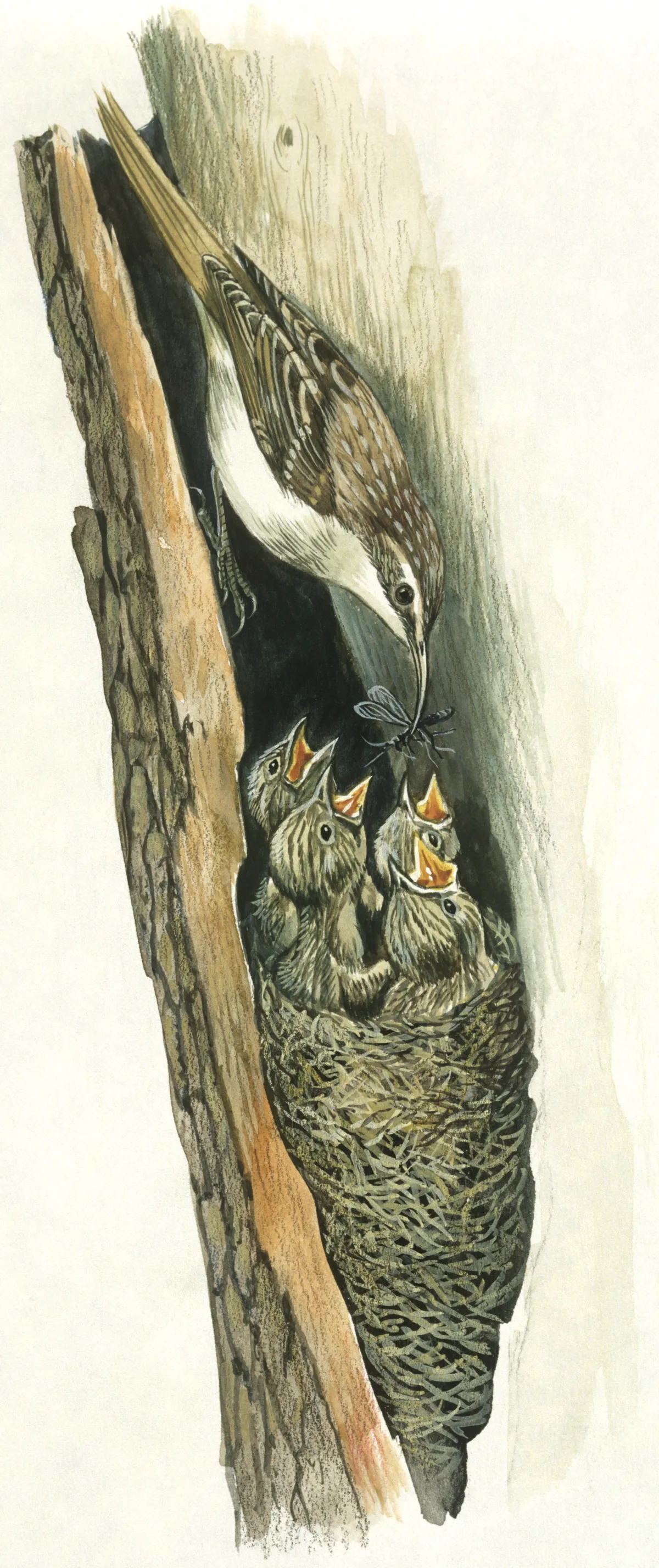Is it a bird or is it a flap of bark? Find out why many people have never seen the attractive treecreeper.
The treecreeper is a bird that many people have not seen but with over 200,000 breeding territories in the UK, it is a lot more common than you might think.
It is rarely reported in gardens, but not necessarily because it isn’t there. A quiet, unobtrusive bird, it blends in with its habitat and rarely ventures out to bird feeders.
Treecreepers are more likely to be found in gardens between November and April, probably due to the fact that they are more conspicuous in the winter when there are no leaves on the trees.
They are solitary, sedentary birds – you’d be lucky to see more than a pair.
Once a treecreeper establishes a territory, it tends to stay within the boundaries.
Ringing research in Nottinghamshire found that the treecreepers studied did not usually venture further than 500m.

1
Do treecreepers have any other names?
A local West Country name for the treecreeper is the ‘tree mouse’, which suits it perfectly.
It climbs up tree trunks in a ‘mouse-like’ manner, supported by its long, stiff tail.
Unlike the nuthatch, it can’t climb back down head first. It has to hop down backwards due to its tail getting in the way so will often choose to fly down instead.
2
Why are treecreepers so hard to see?
If a treecreeper is disturbed, it generally freezes on the tree trunk. Its black and brown mottled plumage provides camouflage and makes it look like the bark of a tree.
In my experience, the species has an annoying habit of avoiding you by moving quickly to the other side of the tree the minute you spot one.

3
Where do treecreepers live?
In Britain, the treecreeper traditionally favours broadleaved woodland, though it is found in many other habitats.
In mainland Europe, the small songbird is found in upland conifer forests.
This is because there is another species of treecreeper in mainland Europe, the short-toed treecreeper, which occupies the broadleaved woodland.
The reason that the treecreeper isn’t confined to conifer forests in the UK is that the short-toed treecreeper did not make it to this country because broadleaved woodland hadn’t established itself when Britain separated from the rest of the Continent.
Short-toed treecreepers are also fairly sedentary, which means that they couldn’t fly that far. However, they have made it to the Channel Islands where there is a breeding population.

4
Where do treecreepers build their nests?
When it comes to nestbuilding, the treecreeper did not opt the most common solution.
Instead, it builds its nest behind a flap of loose bark.
The treecreeper starts with a base of twigs and then add grass, moss, lichen and wood chips. It takes about a week to build the whole nest.
The female then lines the nest with hair, wool and feathers.
Given that a clutch size is about 5-6, the nest can get quite crowded towards the end.
Treecreepers breed between April and July, taking advantage of caterpillars to feed their young.
You can buy wedge-shaped nestboxes that have been designed for treecreepers, but they are rarely used.

5
How to spot a treecreeper
If you see a treecreeper up-close, it is hard to mistake it for anything else.
It has mottled brown and black plumage above and is mainly white below, with a long, slender, downcurved bill.
It also has a white supercilium (stripe above the eye).
Treecreepers are very small, the size of a wren, and only weigh 10g, though they look a lot bigger due to their bill and long, stiff tail.
The treecreeper’s song and call is high-pitched and easily missed, sounding almost insect-like with a ‘see-see-see’ call.
The British Trust of Ornithology (BTO) works in partnership with over 40,000 volunteer birdwatchers to chart the fortunes of UK birds.
Among the surveys that we coordinate is our popular Garden BirdWatch, the largest year-round survey of garden birds in the world.
Each month we highlight a bird for you to look out for in your garden.
For more information about Garden BirdWatch or to speak to the Garden Ecology Team please email gbw@bto.org
